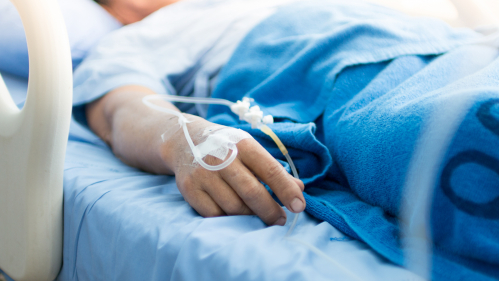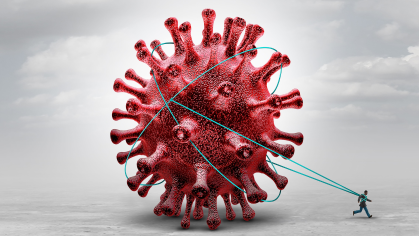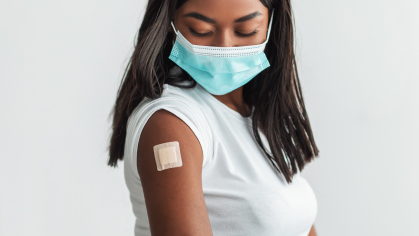Trust Clinical COVID-19 Signs Over a Negative RT-PCR Test

A Rutgers study finds patients who repeatedly tested negative but had COVID-19 clinical signs were likely to have COVID-19
Treatment for COVID-19 should be based on clinical judgment and not just testing, according to a Rutgers study that found testing alone is missing some people with the virus, especially those at high risk who need therapeutic treatments.
The study, published in the journal BMC Infectious Diseases, found that hospital patients early in the pandemic who had repeatedly negative RT-PCR tests but exhibited signs and/or symptoms of the disease were half as likely to receive treatment as those who tested positive. The findings support treatment for COVID-19 based on clinical judgment and not solely on tests, especially for high-risk patients.
Between April and October 2020, researchers compared the blood samples of hospital patients who had two RT-PCR negative tests against samples from RT-PCR-confirmed positive patients. They looked at four groups: 40 patients who were RT-PCR-confirmed positive; 20 who repeatedly tested negative and had symptoms or chest imaging indicative of COVID-19 and no alternative diagnosis; 15 who repeatedly tested negative and had COVID-like symptoms or imaging findings with a potential alternative diagnosis; and 43 who tested negative and had symptoms that were not compatible with COVID-19.
“What we found was quite surprising. The people who repeatedly tested negative and had symptoms without an alternative diagnosis had a similar antibody profile as those who were RT-PCR-confirmed positive. Patients with symptoms who tested negative and had an alternative diagnosis were similar to those who were negative without symptoms,” said co-senior author David Alland, director of the Rutgers New Jersey Medical School Public Health Research Institute and the Center for COVID-19 Response and Pandemic Preparedness within the Rutgers Biomedical and Health Sciences Institute for Infectious and Inflammatory Diseases. “Since this study was done early in the pandemic before the infection spread and vaccines were rolled out, these findings provide presumptive data that these symptomatic patients without an alternative diagnosis who repeatedly tested negative had COVID due to a similar prevalence and level of antibodies as confirmed cases.”
RT-PCR tests are not perfect, Alland said. “After the first week of infection, there is a decline in virus shedding in the respiratory tract, where tests can become falsely negative,” he said. “Thus, a COVID diagnosis might be missed if a patient presents with symptoms further along in the infection, which can lead to delayed, missed or unnecessary treatment for an inaccurate alternative diagnosis.” However, Alland notes that some of their study participants also appeared to have false negative RT-PCR test results soon after symptoms developed, suggesting that even within the first week, RT-PCR testing can miss COVID-19 cases.
The study found that despite similar rates of disease progression, only 43 percent of the severely ill patients who repeatedly tested negative but had clinical signs received COVID treatment compared to 79 percent of the severely ill symptomatic RT-PCR-confirmed positive patients.
“These findings emphasize the critical role that clinical diagnosis plays in determining whether to treat a patient for COVID and that clinicians should not solely rely on RT-PCR tests,” said senior author Yingda Xie, an assistant professor at the Rutgers New Jersey Medical School.


